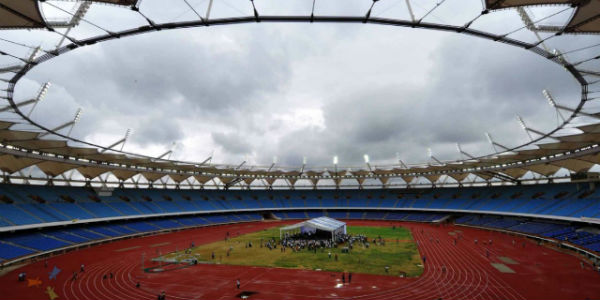Places of Interest in Delhi
India Gate and Rajpath

India Gate and Rajpath
Situated along the ceremonial Rajpath avenue (meaning King's Way) in New Delhi, India Gate is a memorial raised in honour of the Indian soldiers who died during the Afghan wars and World War I. The names of the soldiers who died in these wars are inscribed on the walls. The cenotaph (or shrine) in the middle is constructed with black marble and depicts a rifle placed on its barrel, crested by a soldier's helmet.
Humayun's Tomb

Humayun's Tomb
Humayun's Tomb was built by Humayun's widow, Hamida Banu Begum. Designed by a Persian architect named Mirak Mirza Ghiyas, the structure was begun in 1562 and completed in 1565. The tomb established a standard for all later Mughal monuments, which followed its design, most notably the Taj Mahal.
Lodhi Gardens
Lodhi Gardens
The Lodhi Gardens is a park spread over 90 acres. It contains architectural works of the 15th century Sayyid and Lodi’s, a Pathan dynasty which ruled much of Northern India during the 16th century.
Nizamuddin Dargah

Nizamuddin Dargah
Hazrat Nizamuddin Auliyaa Dargah is located in New Delhi, across the road from Humayun's tomb. The 'dargah' of revered Sufi saint Hazrat Nizamuddin Auliyaa has its devotees all over the Islamic world. A settlement has sprung up here, known as 'Nizamuddin' for short. This shrine also houses the tomb of Amir Khusrau, a famous poet and the saint's beloved disciple. Encroachments plaque, the shrine, and the area itself, seem to belong to another century. The shrine was built by Muhammad Tughluq & is one of the sacred places of pilgrimage in India.
Purana Quila

Purana Quila
The Purana Quila (Old Fort) is a good example of medieval military architecture. Built by Humayun, with later-day modifications by Sher Shah Suri, the Purana Quila is a monument of bold design, which is strong, straightforward, and every inch a fortress. It is different from the well-planned, carefully decorated, and palatial forts of the later Mughal rulers. Purana Quila is also different from the later forts of the Mughals, as it does not have a complex of palaces, administrative, and recreational buildings as is generally found in the forts built later on.
Safdarjung's Tomb

Safdarjung's Tomb
Safdarjung's tomb was built by Nawab Shuja-ud-Daulah, the son of Safdarjung. Safdarjung was the governor of Awadh and later became the Prime Minister of Muhammad Shah, the Mughal emperor. Built in 1753-1754, the Safdarjung tomb lies at the Lodi road, New Delhi. Safdarjung's tomb is set in the middle of a garden, which spreads over an area of 300 sq m. The garden of Safdarjung's tomb is laid down on the pattern of the Mughal Charbagh style.
Delhi Zoo

Delhi Zoo
The Delhi zoo came decades later after New Delhi was built. although the idea to have a zoo at the national capital was mooted in 1951, the park was inaugurated in November 1959. In 1952 the Indian Board for Wildlife created a committee to look into creating a zoo for Delhi. The government of India was to develop the zoo and then turn it over to Delhi as a working enterprise.
Jantar Mantar

Jantar Mantar
The Yantra Mandir consists of 13 architectural astronomy instruments, built by Maharaja Jai Singh II between 1727 to 1734.
Rashtrapati Bhawan

Rashtrapati Bhawan
Built with a mix of Western and Indian styles, Rashtrapati Bhavan was originally built for the Governor General of India. Inaugurated in 1931 as the Viceregal Lodge, the name was changed in 1950 after India became a republic.
Nizamuddin Railway Station

Hazrat Nizamuddin Railway Station
The area was named 'Kale khan ki sarai', a sarai, or rest house for travellers or caravans and royal route from Mughal imperial courts and Chandni Chowk to their retreat at Mehrauli some 32 km away.
ISBT Sarai Kale Khan

ISBT Sarai Kale Khan
The area was named 'Kale khan ki sarai', a sarai, or rest house for travellers or caravans and royal route from Mughal imperial courts and Chandni Chowk to their retreat at Mehrauli some 32 km away.
Jawaharlal Nehru Stadium

Jawaharlal Nehru Stadium
To preserve the iconic character of Jawaharlal Nehru Stadium, an innovative design for roof over seating tier has been provided this is the one of the largest membrane roof system in the world.
